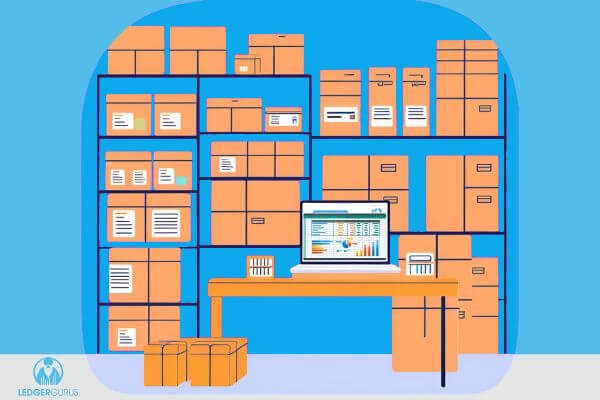
COGS is a key number for ecommerce businesses, so let’s get serious about understanding cost of goods sold (COGS).
Truth is, for ecommerce businesses, COGS is one of the most important things you need to understand for a few reasons:
- COGS is your largest expense as an inventory business.
- Incorrect COGS will give you the wrong taxable income.
- Incorrect COGS will give you inaccurate profit margin numbers.
- Inaccurate profit margin numbers affect your ability to effectively manage your business.
- Decisions about pricing, order quantity, ad spend, and more will be affected by COGS and profit margins.
Why You Need An Accurate Cost of Goods Sold Number
Hopefully you can see the importance of nailing down your cost of goods sold number. An accurate COGS number relies on three things:
- Calculating an accurate unit cost for each SKU
- Correctly identifying quantity of each SKU sold
- Accurately recording COGS
Calculating a Cost Number for Each SKU
Your cost of goods sold is exactly what it sounds like. Simply stated, it’s the cost of the product you sold during a period.
Calculating a cost for each product SKU can be full of pit-holes and surprise endings and is a big pain for ecommerce.
As an ecommerce business you fall into one of five categories when it comes to the origin of your product:
Reseller – You buy product from someone else who produced the product and owns the rights to the product. Then, you resell your purchased product for more than it cost you to purchase. This is done through retail arbitrage or a wholesale relationship.
Outsourced manufacturing – You contract with another company that produces the product that you own the rights to. This is often done with on oversees relationship. The manufacturer orders the raw materials and charges you for a finished product.
Manufacturer – You produce the product and own the rights to the product. You order raw materials and have other direct costs to produce your product such as labor, packaging, and machine time.
Hybrid – You outsource the labor for producing your product to a manufacturer but supply some or all the raw materials.
Product broker – Your website sells the products of others, but those vendors dropship the product to the end customer. You never take ownership of the product, so you won’t have to worry about calculating the cost of your inventory, as you have none. You only need to record the commission you receive off facilitating sales.
Calculating your cost for each SKU is different for each situation. We have clients here at LedgerGurus that fall into each of these categories.
Cost calculation for purchasing finished product – resellers and outsourced manufacturers
It would be nice if ordering and purchasing the finished product from a supplier made for an easy, straightforward cost of goods calculation, but it doesn’t.
Some bookkeepers will simply divide the purchase amount for an order by the quantity to get a cost number for that product. This calculation is known as “buy costs”, but additional costs were most likely required for you to receive that product.
Additional costs probably included:
- Shipping
- Insurance fees
- Customs and duties fees
- And more
Adding these additional costs to calculate a cost of goods number will give you a “landed cost.”
Landed costs versus buy costs opens another rabbit hole. This is a different topic for another day, so I won’t diverge on it now, but we do have a blog on how to determine all your costs to accurately price your products.
Cost calculation for producing your own product – manufacturers and hybrids
The other option is that you produce your own product. This will require you to track and calculate raw materials, labor, packaging, and any other costs that go into creating each product.
Great manufacturing accounting can be as complicated and diverse on its own as ecommerce accounting is without manufacturing accounting.
So, if you are dealing with manufacturing accounting, we take our hats off and stand in a moment of silence for you. And perhaps we should have a talk about making sure your accounting is being done well (a shameless plug, I know).
Identifying Quantities of Each Product Sold
Ecommerce businesses are usually more comfortable with this part. They usually know the volume of each SKU they are selling. This data usually comes from back-end reports on the channels you are selling.
Just make sure you are thorough, and consider ALL ways in which your inventory is leaving.
For example, remember to track product you have given away as gifts to neighbors, friends, or influencers and other out-of-the-norm situations like crowd-funding campaigns.
Accurately Recording COGS
Once you have calculated a cost for each SKU in your business, you will now need to accurately record COGS on the books.
The most common mistake ecommerce businesses make in dealing with COGS is to expense the purchase of all inventory as COGS at the time inventory is purchased.
Did your stomach just drop a little? Don’t worry, lots of business make this big mistake.
So, what’s wrong with recording COGS this way?
(View our video about recording COGS – cash vs. accrual methods.)
Think about this. Let’s say in January you pay $70,000 for inventory and you expense it right away. As a result, you have a huge hit against your profit and loss for this large inventory purchase.
That inventory doesn’t sell right away but is sold over the next several months.
When that inventory sells, your books show all the revenue but now there’s no expense associated with those sales and no ability to really see what your margins are. This kind of incorrect recording would look like this:
Incorrect COGS recording:
| January | February | March | |
| Sales | 0 | $50,000 | $100,000 |
| COGS | -$70,000 | 0 | 0 |
| Net Income | -$70,000 | $50,000 | $100,000 |
Are you starting to see the problem?
To get real insight into your business, you need to get the recording of cost of goods sold right.
All purchases initially skip your profit and loss and show up only on your balance sheet in inventory, until they are sold.
When product is sold, inventory is then decreased on the balance sheet and you record the cost of goods sold for each product sold (use previously calculated cost of each SKU multiplied by quantity sold of each SKU). Then you see the actual margins for your sales that month.
Here is the correct way to record your COGS:
Correct COGS recording:
| January | February | March | |
| Sales | 0 | $50,000 | $100,000 |
| COGS | 0 | -$20,000 | -$50,000 |
| Net Income | 0 | $30,000 | $50,000 |
At the end of each month, your profit and loss statement should show revenue and COGS reflective of the margin you enjoyed on those products at the time of their sale.
Then, your balance sheet should also show an inventory balance reflective of all the product you have remaining.
Together, these two numbers give you an accurate picture of where you stand with inventory and COGS and, more importantly, where you stand on gross margin (gross margin = gross revenue – COGS).
Getting COGS Right
I’ve said it before and you’ll hear me say it again, “businesses don’t run off their sales, they run off gross profit.” Getting gross profit right, which is a direct result of getting cost of goods sold right, is the most important piece of insight you’ll have for your ecommerce business.
So, the big take-aways for cost of goods sold are the following:
- Accurately calculate a unit cost for each SKU based on advanced methods.
- Initial purchases of inventory should be shown on the balance sheet, not expensed at the time of purchase.
- Each sale should have the cost of that sold inventory identified and moved out of inventory, then shown as COGS during the same period as that sale. This doesn’t have to be done sale by sale. It can be summarized instead (usually at least by month), but the timing of the revenue should match the timing of the COGS.
- Gross margin = Sales – COGS. This is the most important number for an ecommerce company to calculate, record, and watch.






